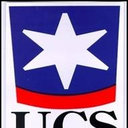Use of palmae wax hydrocarbon fractions as chemotaxonomical markers in Butia and Syagrus.
Palavras-chave
Resumo
The wax hydrocarbon fractions of native Butia and Syagrus species collected from Palms in different regions of the of Rio Grande do Sul state (Brazil) and in Rocha (Uruguay) were analyzed to evaluate their potential as chemotaxonomic markers. The wax was extracted with chloroform and the resulting wax was fractionated by preparative TLC. The hydrocarbon fractions were analyzed by GC-MS. Statistical analyses were completed with the Statistica 5.0 program. The total crude wax yields averaged 0.31% w.w-1 dried leaves for Butia samples and 0.28% for Syagrus samples. The linear hydrocarbons represented on average 15% of the total waxes in the case of Butia samples and 13.7% in Syagrus samples. Hentriacontane and triacontane were the main components of all samples. The comparison of the means showed significant differences among Butia and Syagrus samples, and amongst Butia samples collected in different localities. In the case of the Syagrus collections no consistent groupings could be made. In the case of Butia samples the formation of three groupings could be observed, which were consistent with the species described for their geographical distribution. These results are discussed in the paper.



